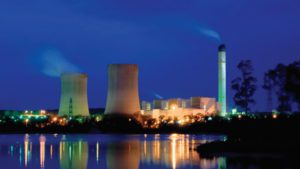Another Bass Strait island is set to begin the shift to renewables, with Hydro Tasmania confirming it would soon start developing a “hybrid energy hub” combining wind, solar and storage on Flinders Island – an off-grid community 54 kilometres off Tasmania’s north east coast.
Hydro Tasmania, which has had great success with a similar project on the nearby King Island, says the Flinders Island project – which, as of today, is backed by ARENA to the tune of $5.5 million – aims to use a range of technologies to supply the majority of its energy needs with renewables within two years.
Not unlike the above-mentioned King Island Renewable Energy Integratiuon Project, the $12.88 million Flinders Island project will combine solar, wind and battery storage to cut its costly diesel fuel habit – in this case, by upwards of 60 per cent.
This will involve the integration of wind and solar generation with the existing diesel power station, as well as the installation of enabling technology, such as flywheel and battery energy storage, in a new form designed to drive down the cost of these systems.

But unlike KIREIP, the Flinders project will trial the use of modular units to house and ship the key technologies – an exciting, Tasmanian-made innovation that is being developed and tested for the first time through the Hybrid Energy Hub.
Hydro Tasmania hopes the modular units – developed in conjunction with local Tasmanian manufacturers – will provide a low-cost and scalable solution for rapid transport and installation of renewables; one that could also be used for such applications as disaster relief, or for powering the mining industry.
ARENA CEO Ivor Frischknecht described the development of the portable hybrid energy solution as one of the project’s most exciting aspects, with its potential to drive down costs and deliver a commercially competitive product.
“This low-cost, scalable approach has the potential to be a real game changer in remote areas – reducing the amount of construction and engineering work needed to be carried out on site would significantly reduce costs, risks and construction time,” Frischknecht said in a statement accompanying Wednesday’s funding announcement.
“Technologies like storage and dynamic resistors smooth out the power generated from solar and wind, while the automated control systems ensure generation and enabling equipment are coordinated and perform when required.
“Australia is a large country with many off-grid communities and industries facing similar energy supply challenges, whether they are on islands or in remote locations on the mainland.”
Hydro Tasmania has already seen one such opportunity in Energy Developments Limited’s Coober Pedy project, incorporating wind, solar and enablers, which aims to achieve a 70 per cent reduction in diesel fuel used for power supply to the township of Coober Pedy.
The company has been assisting EDL with the development phase of this project which would make use of the Tasmanian designed and manufactured modular enabling units if it proceeds to implementation.
“This knowledge sharing will ensure we are best placed to advance competitive, reliable renewable energy options for off-grid Australia and help reduce its reliance on trucked and shipped in diesel,” said Frischknecht.
The Flinders Island project is scheduled for completion in November 2016.










